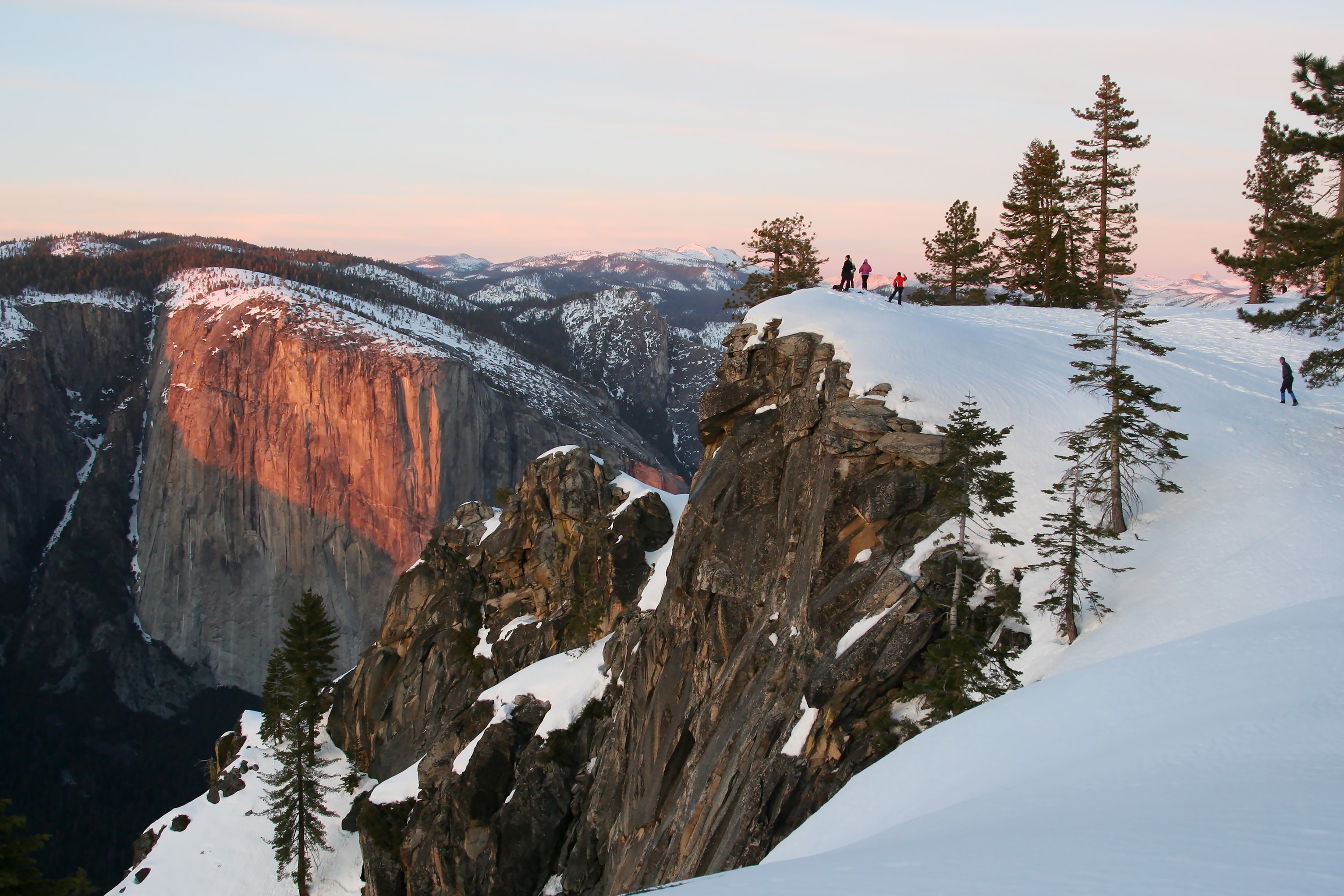Summer may be peak season for visiting a national park, but that doesn’t mean it’s the only time of year to enjoy these scenic spots. While far less popular, a winter national park trip has its perks: The chilly season ushers in a rare solitude in the more popular parks, offers a striking change of scenery and fosters winter-only activities like skiing and snowshoeing that can make for a truly memorable vacation.
Beginning in November, many parks scale back their operations, but only one of the 63 (the remote Isle Royale National Park in Michigan) fully closes during the colder months. In fact, some parks are best explored in the winter when temps are cooler and many bothersome bugs are hibernating.
Plus, traipsing through a quiet forest or watching the sun set over snow-dusted peaks makes for a slightly more unique trip, one that takes a little extra planning but can be more rewarding. “It’s essentially like visiting a whole new park,” says REI Program Manager Gary Elbert, a seasoned guide and adventurer whose team plans and manages REI adventure trips throughout North America.
Whether you’re searching for solitude, looking to enjoy a cold-weather activity or are on the hunt for snowy landscapes, here are the best reasons to plan a winter national park visit this year.
Try a Winter-Only Activity
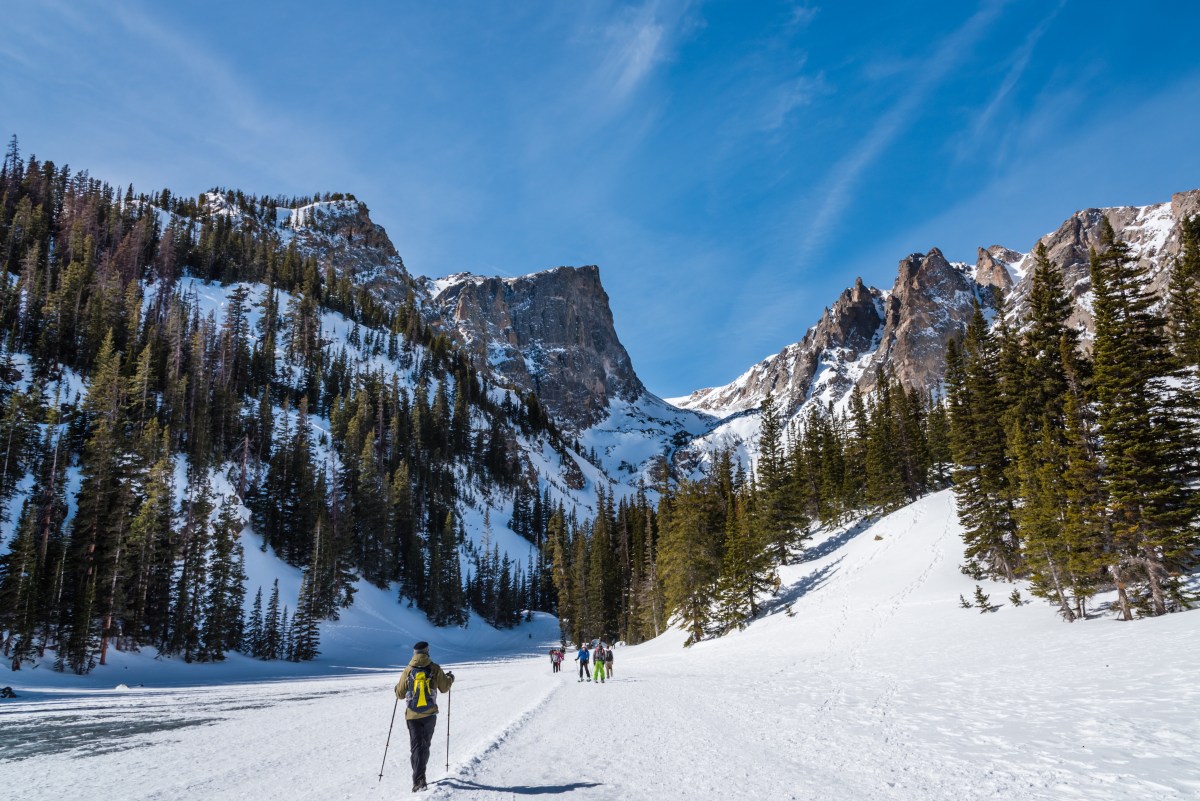
Winter can open up a refreshing array of activities at national parks. Fresh snow may coat popular summer hiking trails at some parks, offering opportunities for snowshoeing as well as cross-country and backcountry skiing.
Parks like Mount Rainier, Grand Teton, Yellowstone and Rocky Mountain are popular destinations for snow-based activities thanks to their mountainous terrain and annual snowfall. Backcountry skiers can flock to steeper slopes, while snowshoers and cross-country skiers can wander the valley floors. A few national parks—Olympic, Yosemite and Cuyahoga—actually have small ski areas inside for those looking to get their gravity fix.
“One of my favorite trips ever was riding a snowcat into Yellowstone in February and skiing around Geyser Basin where wildlife congregates,” says Elbert. “Yellowstone in the winter is truly amazing.”
While motor vehicle access is mostly prohibited in national parks, a few allow snowmobiling in designated areas come winter. Yellowstone is the most popular national park for this activity, which is a unique way to see Old Faithful or the Grand Canyon of Yellowstone with a dusting of snow. A permit (secured through a lottery) is required for self-guided snowmobile trips. There is also limited access for snowmobiling in designated areas in Crater Lake and Acadia National Parks, mostly as a way to get to areas where roads aren’t maintained in the winter.
Experience Fewer Bugs
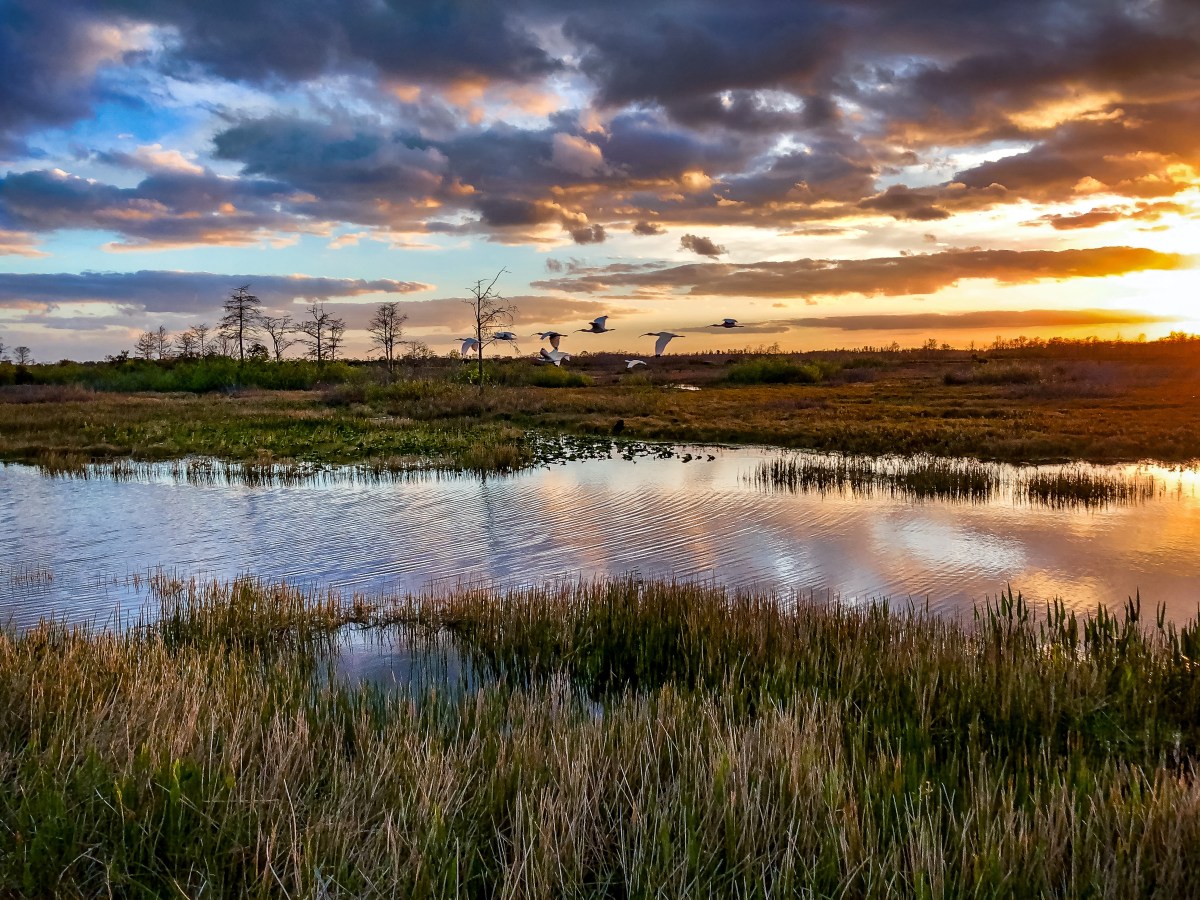
Another great reason for a cool-weather vacation: fewer mosquitoes. These pesky flies thrive at 80°F and above, but typically can’t survive in temps below 50°F, making winter trips ideal for the person who wants to avoid them.
Bug seasons vary throughout the country. Mountainous regions tend to have shorter ones, while hot and humid climates have bug seasons that span several months. Congaree National Park in South Carolina’s mosquito country is a hot spot for bugs that bite. The park, which is buggiest during summer and spring, even has a mosquito meter and themed merchandise at the visitor center. You’re also likely to find an abundance of mosquitoes in places like Florida, Ohio and Colorado—the latter is known for a brutal six-week mosquito season that starts in late June. If you want an itch-free trip, consider visiting one of these parks during colder months.
Enjoy Smaller Crowds

While you may be shoulder-to-shoulder (or bumper-to-bumper) with hordes of other park visitors in the summertime, a trip in the winter typically offers a quiet respite from the crowds.
“As soon as you’re off the beaten path in the winter, you’re by yourself,” says Elber. “It’s such a serene feeling to be out there alone. Sometimes it really feels like you have the whole park to yourself.”
To put the crowds in perspective: More than 300,000 visitors flocked to Bryce Canyon to see the famous hoodoos in June 2022. Earlier that year, in January—when snow blanketed the already striking landscape—visitation was only around 30,000. Fewer people can also mean more options for lodging, which is often scarce and expensive during the high season.
Plus, snowy landscapes offer magic beyond what you can see. “Snow is also a great sound deadener, which makes everything seem all the more still and calm,” says Elbert.
See a Familiar Place in a New Light
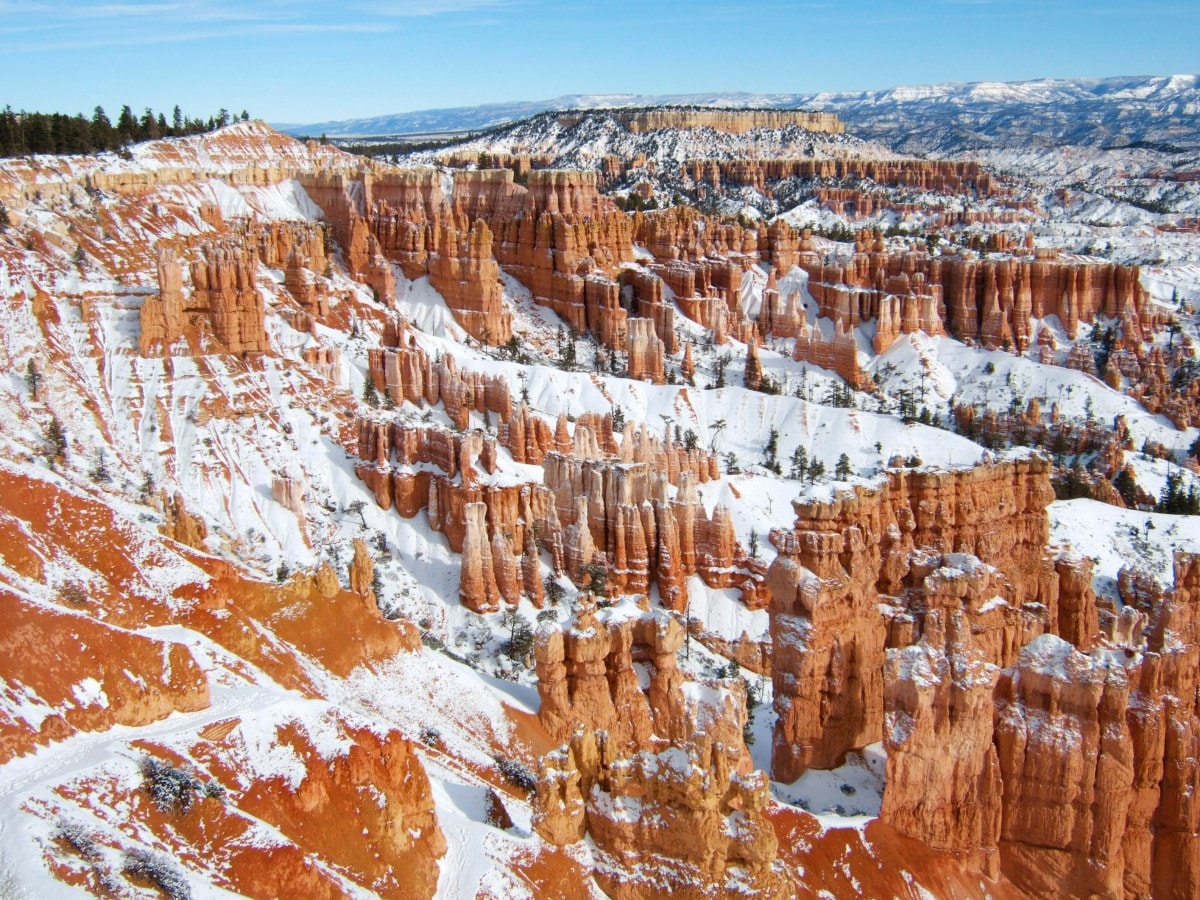
If you think our national parks are striking during the summer, try viewing them in the winter. A fresh coat of snow can completely transform a mountain range, canyon or dense forest. The towering peaks in Yosemite become slumbering giants, and the vibrant wildflower-packed valleys in the Rockies turn into rolling white hills. Visiting the snow-covered desert landscapes in any of Utah’s parks—like Bryce, Zion, Arches and Canyonlands—provides a striking contrast of white and red. It’s a scene that many photographers only dream of capturing.
“If you look at some of Ansel Adams’ Yosemite photos, they look completely different in the winter and summer,” adds Elbert. “It’s like a whole new personality of the place comes out.”
Take Advantage of a Milder Climate

Some parks that are especially hot in the summer can be more enjoyable during the milder winter months. Death Valley, for instance, can reach 120°F in the summer months but cools to the mid 60s or 50s on a December or January day. February and March are perfect months to cycle or hike Badwater Basin, Death Valley’s famous below-sea-level basin, which is almost impossible to visit on foot in the summer (though you can view it from your air-conditioned vehicle). Likewise, the high desert landscape of California’s Joshua Tree National Park cools down to the 60s during the day in January and February, making it an incredible winter hiking destination. Southern Utah parks, like Bryce, Arches, Zion and Canyonlands, can rise above 100°F in the summer, and little to no tree cover makes it challenging to explore the desert. The Grand Canyon and Big Bend national parks also consistently hit the high 90s throughout the summer and make pleasant late-winter trips in March. December through April is dry season in Florida’s Everglades, with less humidity and temps in the high 70s.
Just remember: While 60s and sunny can feel pleasant in the dreary months of February, temps plummet at night in dry desert landscapes. Prepare for extra chilly nights if you plan on camping.
Spot Wildlife
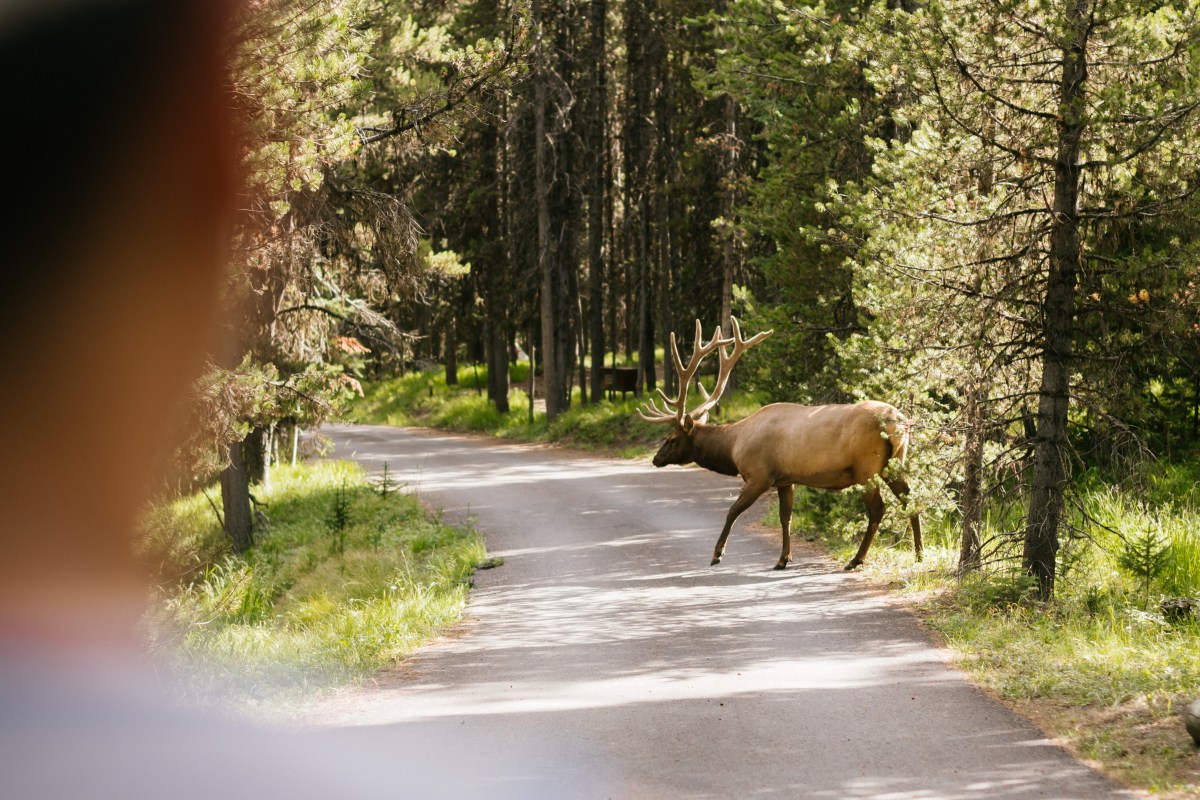
While some wildlife, like bears, settle into hibernation in the winter, others make appearances. Yellowstone is one of the best destinations in the world to see wolves, which are frequently spotted at dawn or dusk in the fall and winter. Mating and hunting season for wolves is January through March, so they’re often discovered by listening for a loud howl. And their brown and gray coats are easier to spot against the contrast of white snow.
Elk and mule deer grow warm winter coats to survive winter in the Grand Canyon, and snowy owls are a delight to spot in Acadia National Park. Though you may have to be more patient to spot wildlife in the winter, the experience is all the more special when there’s no one else around. Witnessing a blanket of frost on a herd of buffalo, or the unique single file lines wolves use to walk through deep snow to save energy is like getting a private window into the national parks after closing time.
Cold-weather climates aren’t the only places to spot winter wildlife. In the Everglades, animals congregate around central watering holes when water levels drop, making it an ideal time to spot alligators, manatees, crocodiles, turtles, otters and a variety of birds. Many birds flock to the warm respite of South Florida, so it’s a haven for birders (with over 300 avian species in the national park).
Are you sold on visiting a national park in the off-season? Before you head out, make sure you’re prepared for the elements. While there are many benefits to visiting a national park in the fourth season, it can also take a little more planning to stay safe and comfortable. Weather can be volatile in the winter and national parks offer fewer services in the off-season months, requiring visitors to be more self-sufficient. To prepare for your trip, stay up to date on rapidly changing weather or emergency closures and have a few backup plans if your original destination isn’t an option. The nice thing about fewer crowds is that it’s easy to adapt your trip last-minute thanks to less demand for campsites and more lodging vacancies—this also makes it easier to hop in the car and explore a new place on a whim if the weather looks great.
“Even if [the park] is in your backyard and you’ve been there a dozen times, if you’ve never visited that park in the winter, you should go,” says Elbert. “You won’t regret it.”
